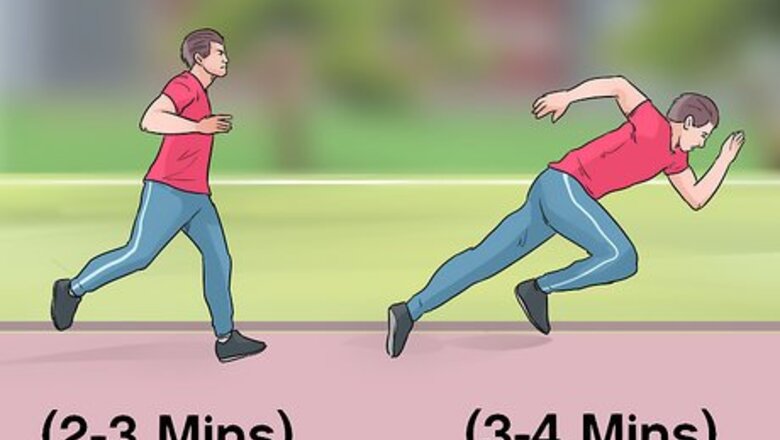
views
Building Power and Stamina
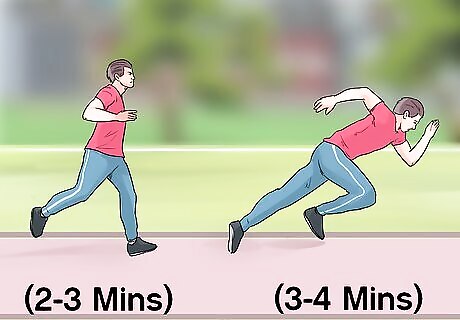
Run to improve your cardiovascular conditioning. Go at a moderate pace until you start to get tired, then take a short rest break before resuming your run. You can also structure your run in intervals, running for 3-4 minutes, walking or resting for 2-3 minutes, then running for another 3-4 minutes and so on. By running frequently and increasing your distance over time, you’ll develop the endurance you need to keep you in the game. Running laps on a track can help you keep up with your time and distance. Schools, churches and recreation centers sometimes open their tracks for community use.
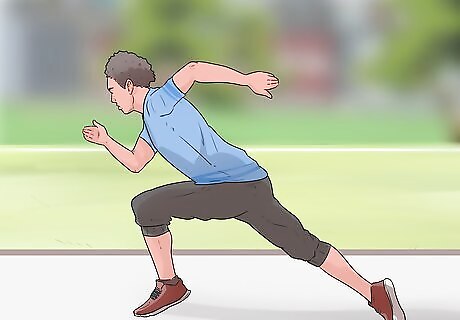
Sprint to build speed. Sprints are essential for being a successful soccer player, as they require high levels of power and control. Measure out a set distance (it’s best to start with a distance between 30-50 meters) and get into a starting position. When you’re ready, explode forward and run to the endpoint as fast as you can. Since sprints are extremely tiring, they should be scheduled at the beginning of the workout right after your warmup. As your fitness improves, you can work up to greater distances like the 100 or 200 meter sprint. Longer sprints bridge the gap between intensity and endurance.

Do strength training 3-4 days a week. While speed and agility are key attributes in soccer, it’s also important to be strong. Be sure to incorporate regular muscular exercise into your routine. You can employ calisthenics like pushups, pull ups, air squats and lunges, or lift weights if you have access to a gym. Try to do some form of resistance exercise every other day. Bodyweight exercises can be performed almost anywhere, which means you won’t need to rely on any specialized equipment. When lifting weights, keep the intensity high and number of repetitions low to build strength.
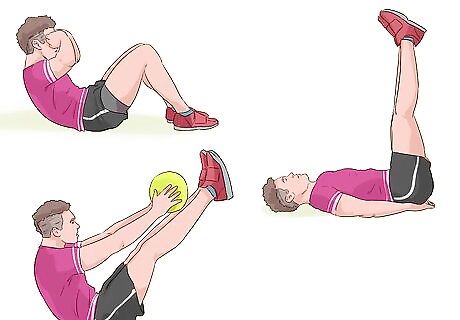
Emphasize your core muscles. You use the muscles of your core to run, stop, change direction, and shoot, so pay special attention to them. Sit-ups, crunches, leg lifts, V-ups and bicycles are all excellent exercises for strengthening the core. Try to do half an hour of core training at least twice a week. This can come near the end of practice or serve as its own separate workout.< Squeeze your stomach tightly throughout the movement to get the most out of each exercise. Work on your core and your returns at the same time by heading a ball tossed by a friend at the top of each sit up.
Performing Essential Conditioning Drills
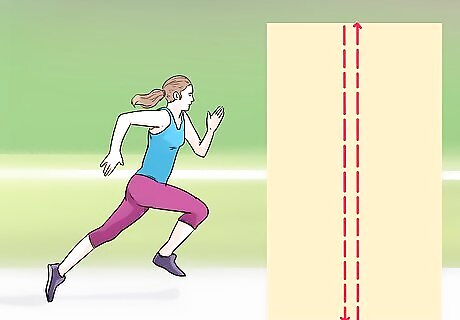
Run suicides. Suicides combine explosive power with the dexterity. Set down markers at regular distances going down the field or track. Sprint from your starting point to the first marker, then immediately turn around and return to the start. From there, sprint to the second marker, then back to the start, then to the third marker and so on. When you're first getting the hang of suicides, run through one full circuit, then pause to catch your breath. Work up to the point where you can complete multiple circuits without stopping. A few rounds of suicides are enough to wear out even the most experienced players, so try not to overdo it.
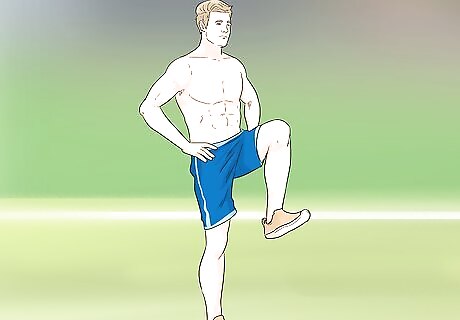
Do high knees. Stand with one foot on the ground and bring your other knee up to waist level. In one smooth motion, lower your raised foot to the ground and quickly lift the opposite knee. High knees teach you to pick your feet up higher when you run, making your steps more springy and preventing you from getting tripped up. They're also a good dynamic core exercise. You can perform high knees for time, a set distance or simply as a warmup.

Train with the agility ladder. Stretch out the agility ladder on a flat patch of ground, then run from one end to the other using different footwork patterns. Make sure you only set your feet down in the open spaces between the rungs. The agility ladder calls for precise foot placement and increased concentration, which will both come in handy during a scrimmage. For example, you could span the ladder by shuffling sideways, skip every other rung or use alternating steps and leaps like in hopscotch. Run rounds on the agility ladder in between other drills and exercises.
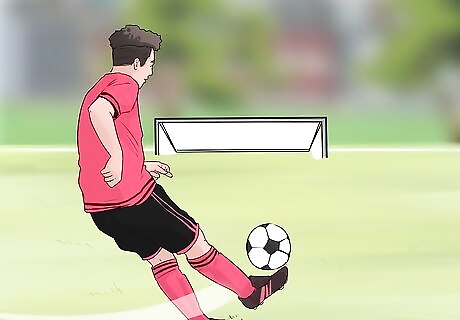
Practice penalty kicks. At the end of your workout, cool down by taking a few free shots at the goal or another target. Shoot from different angles and positions to simulate the conditions of an actual game. Kicking is one of the most fundamental skills in soccer, so there’s no substitute for old fashioned repetition. Aiming at a small target, like a goal post or a square tacked to the net, can help you refine your accuracy. Complete a minimum of 30 kicks with each leg. Learning to shoot with both legs will make you more versatile.
Warming Up and Stretching
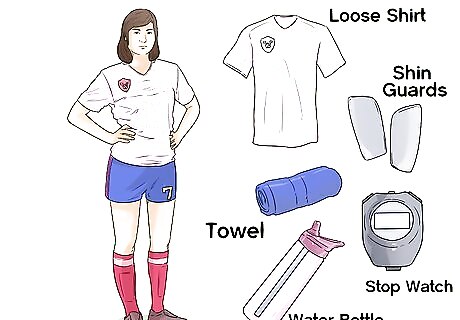
Bring the proper equipment. Before you start practicing, you should double-check to make sure you have everything you need. Wear comfortable, loose-fitting clothing for ease of movement and bring plenty of water. You might also want to use additional training equipment, like shin guards, a towel or a stopwatch. Make sure you’re staying hydrated throughout your workout, especially when it’s hot outside. Practice in a pair of soccer cleats to get used to the feel of maneuvering in them during games.
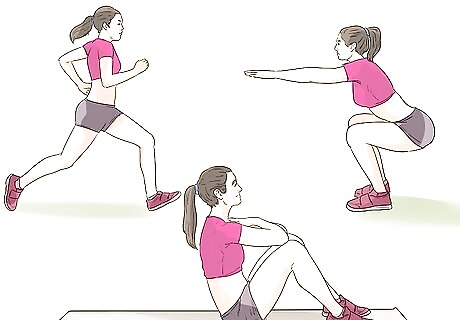
Warm up thoroughly. Start by running in place to get your body loosened up. Follow this with a few minutes of light jogging and some sit-ups, air squats or dynamic stretches. This will activate your muscles. Warm up for at least 10 minutes, or longer on early mornings and cold days. Your warmup should be vigorous enough to get your blood pumping and your muscles warm and relaxed. A proper warmup will also help reduce soreness from previous workouts.
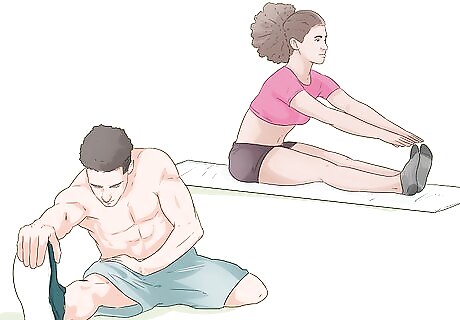
Stretch out your muscles. Go through a full-body stretching session. Begin with the legs, hips and ankles, but don’t forget to also limber up your back, shoulders, wrists and neck. Stretching improves your mobility and makes sprains and strains less likely. It's very easy to pull something if you haven’t stretched enough. Hold the stretch in the deepest range of motion you can for several seconds. The quadriceps and hamstrings are the two biggest muscles in the leg and should receive the most attention while stretching. Dynamic stretches, or stretching while in motion, mimic the kinds of movements found in soccer. Examples of dynamic stretches are swing kicks, side bends and toe touches.
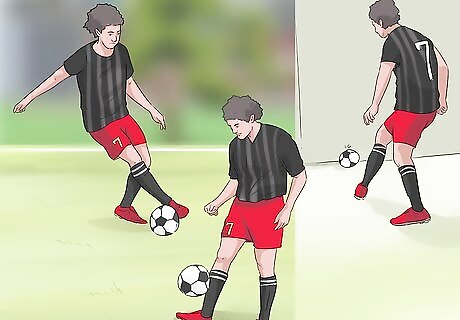
Practice your ball handling skills. Move on to some basic technical exercises. Useful handling drills include dribbling, juggling and passing to yourself. These exercises dial in your focus, coordination and reaction time by forcing you to keep your eye on the ball. Work on ball handling for 10-15 minutes at the beginning and end of each practice session. Equipment like ropes and cones will allow you to map out your handling drills more effectively.













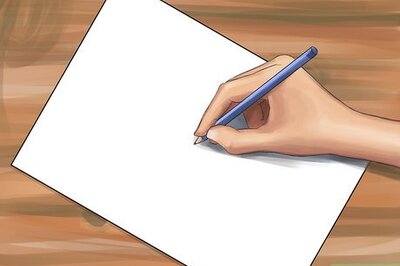
Comments
0 comment